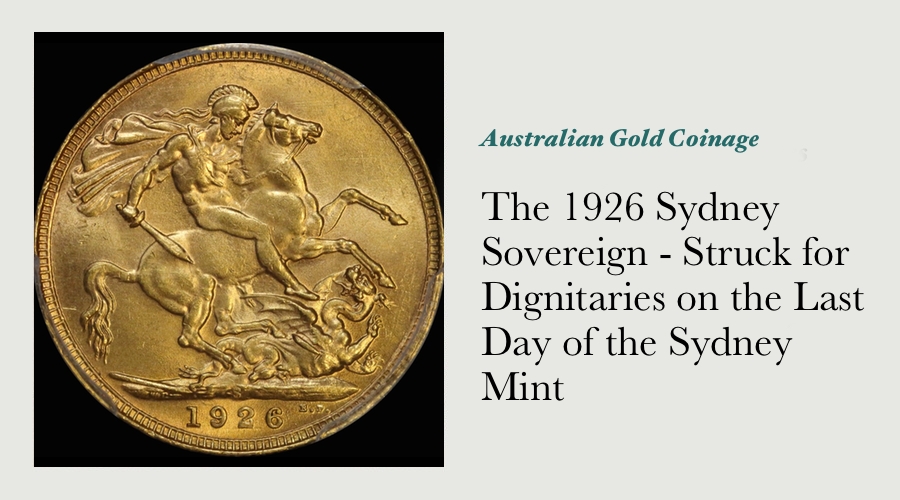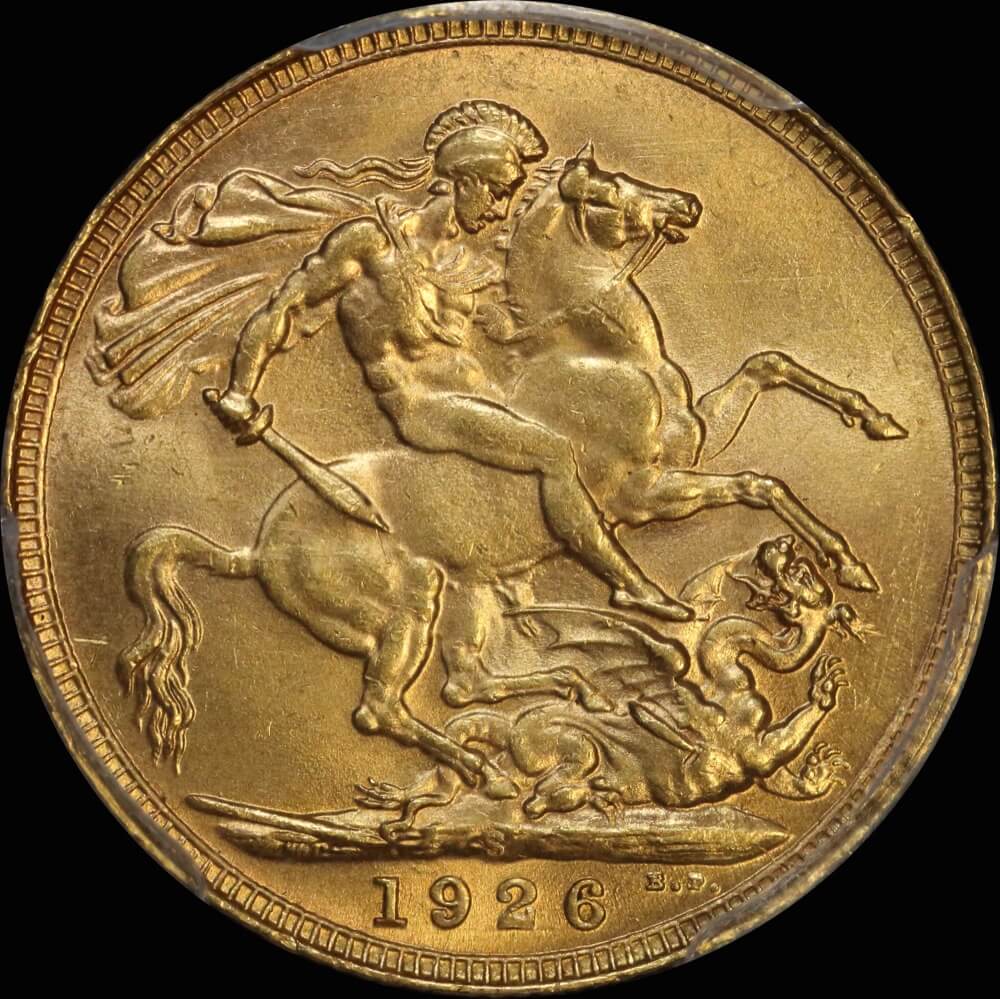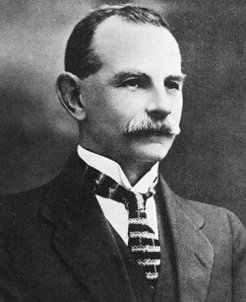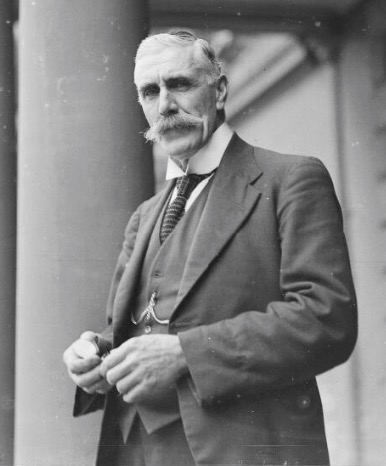The 1926 Sydney Sovereign - Struck for Dignitaries on the Last Day of the Sydney Mint

The 1926 Sydney sovereign is something of an enigma to many numismatists: published information on it is almost as rare as the coin itself.
Although the official gold sovereign mintage for Sydney in 1926 is 131,050, many senior numismatists believe that 131,000 were shipped to London as payment against debts incurred by the Australian Government in World War I. It is thought that these coins were melted down immediately upon arrival in London, and the incredible rarity of this coin certainly appears to bear that theory out.
The Last Sydney Mint Sovereigns Were Struck on August 11th, 1926
Although the last gold deposits at the Sydney Mint were made on June 30th 1926, the last sovereigns were not actually struck until August 11th.
In a description of events relating to the closure of the Sydney Mint, the Deputy Master (Mr A.M. Le Seouf), stated in the Royal Mint Annual Report that “Anything of historic interest has been preserved for public institutions, some gentlemen who had already made valuable presentations tothe Museums coming forward to purchase valuable additions to their collections. In this way there will be a permanent memorial in this city of the first overseas branch of the Royal Mint.”
Le Seouf’s note is clear in telling us that the 1926 Sydney sovereigns we see today had a very auspicious birth.
Each of the last fifty were struck for a senior dignitary as a lasting record of the wealth generated by the Sydney Mint.
The renown William Dixson Australiana Collection, now part of the State Library of New South Wales, includes the invoice made out to Sir William Dixson for the purchase of the bullion used to mint the fifty sovereigns on August 11th, 1926.
It also includes a statement describing the way the sovereigns were struck, and is signed by Robert C. Dixson, Sir William’s son.
This statement confirms that the last 1926 Sydney sovereigns were struck for public & selected private collections. Robert Dixson’s note further states that, “…the last eight were struck individually.”
The Last Eight Were Struck Individually
It would be logical to conclude that as these final eight coins were struck with the utmost care, their appearance would set them apart from the other forty-two sovereigns produced. Numismatists regard these exclusive coins as specimens. They can be fairly easily differentiated by comparing the appearance of their surfaces, as well as by checking for certain die markers.
Very few Australian coins command a heritage as exclusive and auspicious as the 1926 Sydney sovereign - not only is it one of Australia’s rarest coins, it is also one of the most prestigious to own.
Just Where Are the Eight Specimens Now?
Auction activity for coins as rare as this can be tracked quite carefully - provenances are often noted within auction lot descriptions, and photographs can allow individual coins to be attributed by the identifying marks they exhibit.
Robert Dixson’s note states that the very last two (specimen) sovereigns struck were sent to London, one presumes to the Royal Mint or the British Museum. One numismatist that has researched this coin previously stated that those coins were melted down, and are hence lost not only to collectors, but to public collections also.
Robert Dixson’s note further states that the third and fourth last sovereigns struck were presented to Sir William Dixson – these are housed in the Dixson Collection of Australiana (held by the SLNSW), and are also unavailable to collectors.
We know that Museum Victoria (custodian of the former Melbourne Mint collection), also has a 1926 Sydney specimen sovereign in their collection. Notes by their numismatic curator somewhat confusingly state that "Le Souef, the Deputy Master of the Sydney Mint charged with arranging its closure and the person from whose collection this coin came to the Museum, claimed that this was the last coin struck at the Sydney Mint." This comment does not necessarily reconcile with the recollection of Robert Dixson, whose notes stated that the last coin struck at the Sydney Mint was to be sent to London.
While it is possible that Le Souef may have been mistaken regarding the nature of the coin in his possession, it is far more likely that he was given the second of the coins that had been listed as having been struck for Mr Christie (number 8 on Dixson's list). If that is correct, then the accepted interpretation of the order of striking of the coins in Dixson's list has been incorrect.
As there are four 1926 Sydney specimen sovereigns known to be still held in public collections, this leaves just four of these incredibly historic coins available to private collectors.
Robert Dixson's family offered his coin for sale via Noble Numismatics in March 2007 - the identifying marks on that coin do not match with this one. Based on Dixson's list, that coin has been regarded as being the third last sovereign struck.
The famed Bentley collection of Commonwealth sovereigns was offered for sale by Baldwin's of London in September 2012 - the identifying marks on that coin do not match with this one either. I can trace the provenance of that coin no further back than a Downie's auction in February 1981.
Based on Robert Dixson's note, and the known provenances of the four coins in private hands, I believe the example we offer here was struck either for Dr Waterhouse, or for Mr Christie.
Gustavus Athol Waterhouse was the assistant assayer at the Sydney branch of the Royal Mint between 1900 and 1926, his record on the Australian Dictionary of Biography states that he retired upon the closure of the Sydney Mint.

Alexander John Charles Christie was Superintendent at the Sydney Mint in 1926, and also entered retirement once the Mint closed.
Based on all of the above evidence, we can see that the 1926 Sydney specimen sovereigns available to collectors today can each be traced back to one of two senior and long-standing staff members of the Sydney Mint at the time it closed. That these gentlemen should choose one of these coins as their personal memento of their time working at the Sydney Mint speaks volumes of their numismatic importance.